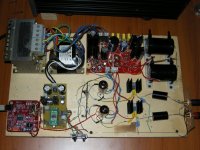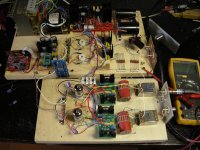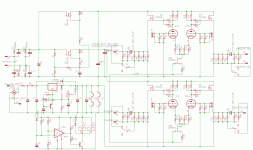I'll volunteer a guess for the winner: Exa, but heavily modded
Actually not, from what I have heard...
Is the WaveIO Xmos allready for sale?
I can´t find a reseller
It is here on this forum
http://www.diyaudio.com/forums/digital-source/188902-xmos-based-asynchronous-usb-i2s-interface.html
I agree that it will be interesting to review some comparisons. Please let us know the OS and some details (cpu speed, etc.). I am especially interested in any instability you might encounter because using thesycon under XP the only issue I have encountered involved another peripheral causing extended DPC latency, hardly the fault of WaveIO and easily resolved using thesycon utility.
Wolfsin,
are you using a short USB cable and an external +5V power supply ?
So far I have not needed to shorten the cable or go to external power. I simply determine which drivers (usually associated with touch pad) cause the really long DPC latencies. I will do more later but my experience to date has been nothing but positive and even without any concern for latencies the worst effect has been one or two very short buffer underflows at 96k.
I am preparing a dedicated Intel D510MO audio client but it is not yet ready. I am completely confident in WaveIO conversion to i2s so that my music collection on NAS can be enjoyed using a portable computer as a 'super remote' with Remote Desktop.
I continue to recommend WaveIO without hesitation.
After 3 tests in 2 different rooms, 3 differents systems, with 3 my friends I can affirm that XMOS module by Lorien is the best.
There are many differences in the listening and only the XMOS has an open sound, full of details and never tiring.
With the XMOS all musical instruments are easily recognizable in the sound stage.
There are many differences in the listening and only the XMOS has an open sound, full of details and never tiring.
With the XMOS all musical instruments are easily recognizable in the sound stage.
I need to specify that the Twistedpearaudio.DAC with Sabre ESS ES9018 cannot be considered a good DAC module for this test because it does not use the master clock of the I2S bus generated by the USB-I2S interface.
The Twistedpearaudio.DAC reclock and resample with another oscillator so the sonic performances with Twistedpearaudio DAC could be completely different, worse or better, but in any case the accuracy of the modules USB-I2S is not used.
Actually, it is easy to use an external master clock with the Buffalo. There are pads for attaching the external clock, and the existing xo can simply be powered down.
Actually, it is easy to use an external master clock with the Buffalo. There are pads for attaching the external clock, and the existing xo can simply be powered down.
Could you post a pic?
I sell the M2Tech USB to I2S module by AckoDAC (https://sites.google.com/site/ackodac/home) at 80 euro + shipping
The new output stage with AD1955 and 12AU7 sound very good!
I am selling some parts:
anna.maria66 | eBay
I am selling some parts:
anna.maria66 | eBay
Here the my new environment to test 2 output stages with AD1955 in passive I/V configuration.
1) my hybyid design with differential ECC82 + IRF720 (see schematic)
2) 5687 in Raleigh Audio Line Stage clone (Chapter 4) using K & K Audio (K & K Audio - Lundahl Transformers, audio DIY kits and more) CCS modules.
The second is more expensive but it sound a little better than first.
1) my hybyid design with differential ECC82 + IRF720 (see schematic)
2) 5687 in Raleigh Audio Line Stage clone (Chapter 4) using K & K Audio (K & K Audio - Lundahl Transformers, audio DIY kits and more) CCS modules.
The second is more expensive but it sound a little better than first.
Attachments
Can you detect the i2s sample rate?
Hopefully you can program the PIC for auto detection.
Some ref,
Frequency counter with PIC and 4- to 5-digit LED display
In Japanese i2s counter (go to bottom, using 16F819 no need for external XO)
http://easyaudiokit.hobby-web.net/bekkan/MBacc/MBacc.html
Hopefully you can program the PIC for auto detection.
Some ref,
Frequency counter with PIC and 4- to 5-digit LED display
In Japanese i2s counter (go to bottom, using 16F819 no need for external XO)
http://easyaudiokit.hobby-web.net/bekkan/MBacc/MBacc.html
Here the my new environment to test 2 output stages with AD1955 in passive I/V configuration.
1) my hybyid design with differential ECC82 + IRF720 (see schematic)
2) 5687 in Raleigh Audio Line Stage clone (Chapter 4) using K & K Audio (K & K Audio - Lundahl Transformers, audio DIY kits and more) CCS modules.
The second is more expensive but it sound a little better than first.
Last edited:
- Status
- This old topic is closed. If you want to reopen this topic, contact a moderator using the "Report Post" button.
- Home
- Source & Line
- Digital Source
- USB to I2S: M2Tech vs XMOS vs Open-source Qnktc


